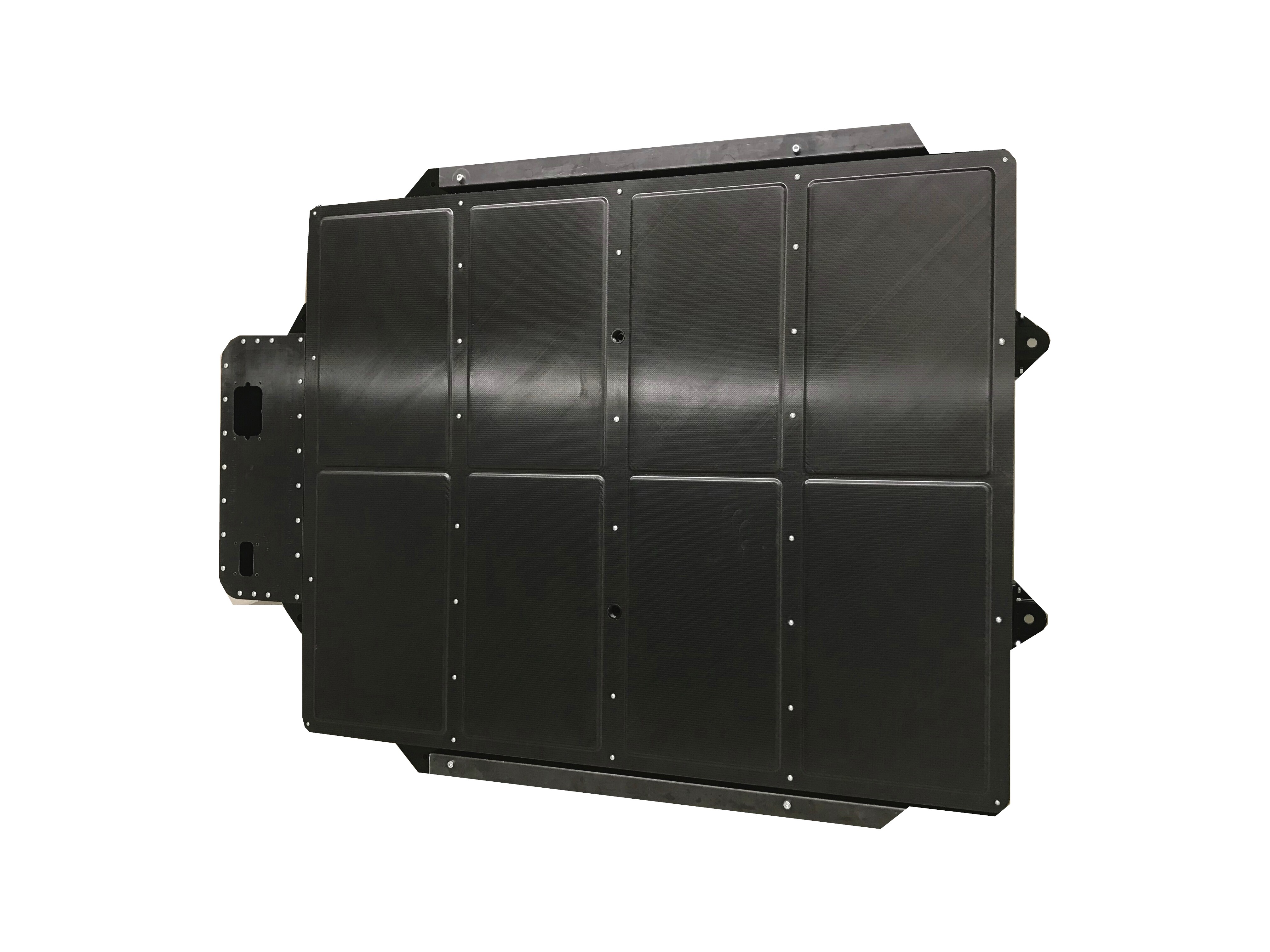
SGL Carbon has developed prototype composite battery enclosures that are reportedly 40% lighter than aluminum.
The company worked with Chinese automotive manufacturer NIO to develop the prototypes, which are made of carbon-fiber reinforced plastic (CFRP) for its electric vehicles. The bottom and cover plate design combine a sandwich core with multiple layers of carbon fiber non-crimped fabrics. According to the companies, the battery enclosure is lightweight, stable and safe and it can be changed at swapping stations of NIO within just three minutes.
‘Commercial battery enclosures for electric vehicles are mainly made of aluminum and steel,’ said Sebastian Grasser, head of automotive at SGL Carbon. ‘In comparison, the CFRP battery enclosure is around 40% lighter. Other benefits include the enclosures’ stiffness and the approximately 200 times lower thermal conductivity of CFRP compared to aluminum, which better shields the battery from heat and cold. Plus, the composite also offers excellent values in terms of water and gas leakage tightness and corrosion resistance.’
‘Using composite material, especially high-performance carbon fiber in the battery enclosure system, our vehicle can achieve a better dynamic performance, increased range, and obtain remarkably high energy density of the battery pack (over 180 Wh/kg),’ said Bin Wei, senior manager at NIO.
This story uses material from SGL, with editorial changes made by Materials Today. The views expressed in this article do not necessarily represent those of Elsevier.





